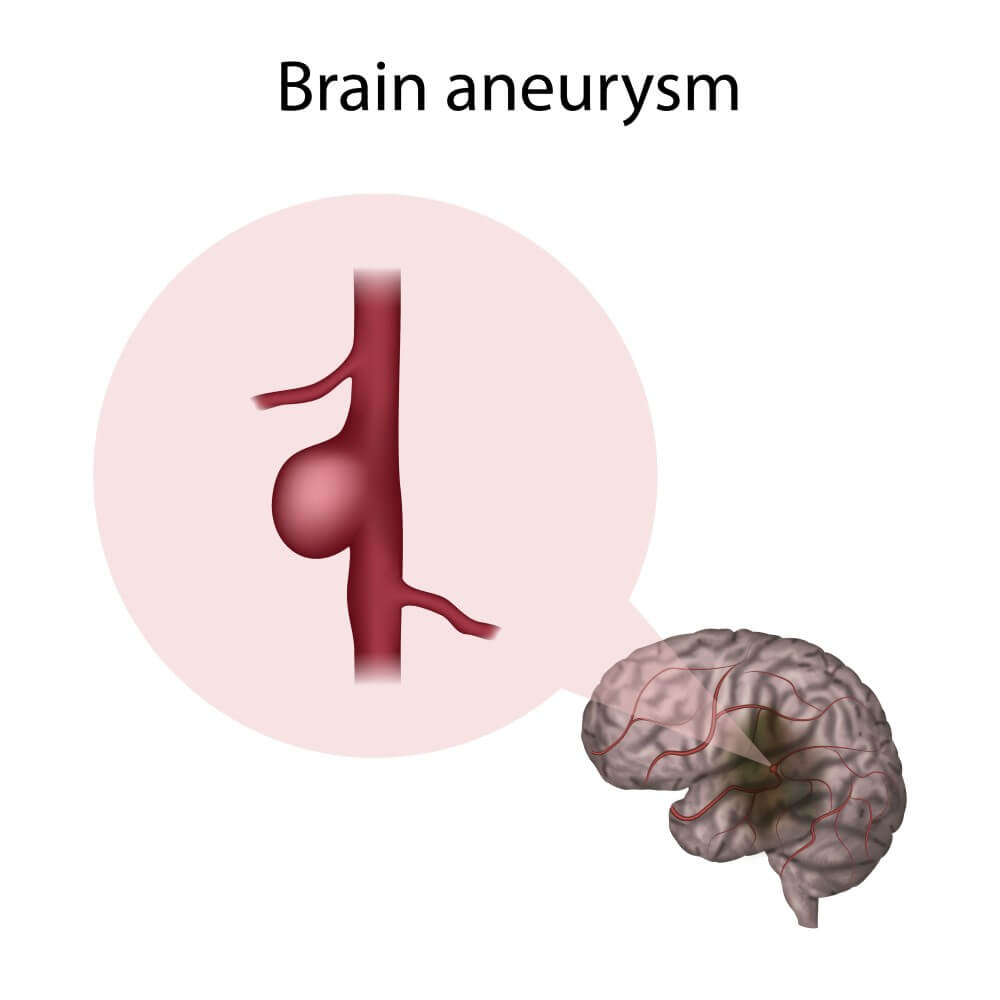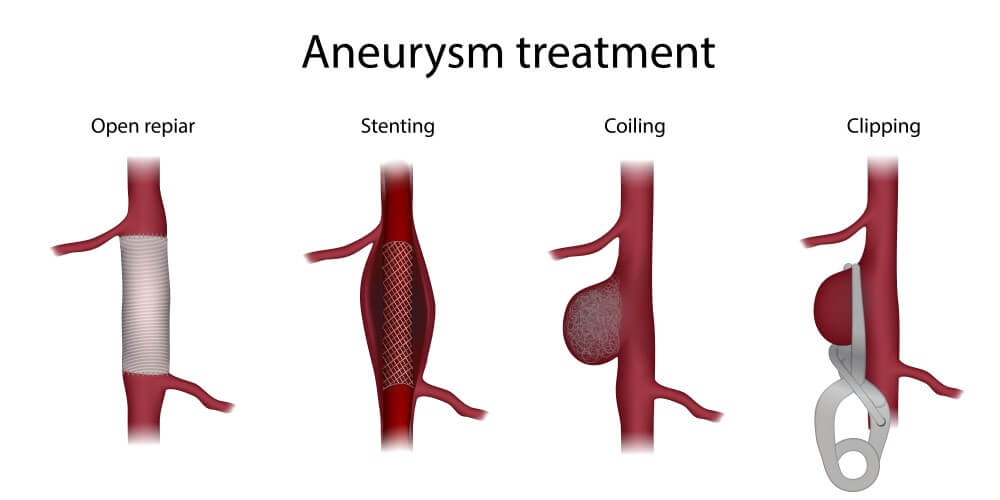Aneurysms

A brain aneurysm is a weak spot on a blood vessel in the brain resulting in a thin-walled outpouching from the blood vessel. It can very often be there without producing any symptoms. The problem is that an aneurysm can become thinner or inflamed and rupture. When a brain aneurysm ruptures, it quickly becomes a life-threatening situation. That’s why understanding your risks, recognizing any symptoms, and getting immediate, expert treatment is so important.
Some of the more common risk factors for developing an aneurysm, or provoking an aneurysm to rupture, include:
- Being over the age of 40, especially for women
- Smoking (reversible)
- High blood pressure (reversible)
- Hardening of the arteries
- Cholesterol (reversible)
- Drug use, particularly cocaine (reversible)
- Head injury
- Heavy alcohol consumption (reversible)
- Infection of an artery wall or heart valve
- Family history of brain aneurysms (particularly a first-degree relative like a parent or sibling)
- Connective tissue disorder (Marfan syndrome, Ehlers-Danlos syndrome, neurofibromatosis type-1, Loeys-Dietz syndrome)
- Polycystic kidney disease
- Coarctation of the aorta
- Cerebral arteriovenous malformation
Unruptured Aneurysm
An unruptured aneurysm, especially if it's very small, may not present with any symptoms at all. However, because it can cause pressure in the brain, you may experience:
- Pain above or behind an eye
- A dilated pupil
- A drooping eyelid
- A change in vision or double vision
- Numbness, weakness, or paralysis on one side of the face
- Headaches
- Neck pain or stiffness
- Ringing in the ears
- Loss of balance and coordination
- Short-term memory loss
- Fatigue
- Speech complications
Leaking Aneurysm
In a small number of cases, an aneurysm can suddenly enlarge or even leak a small amount of blood (called a “sentinel bleed”) prior to rupturing. This is often accompanied by a sudden, severe headache. Other symptoms may include:
- Double vision
- Neck stiffness
Ruptured Aneurysm
A sudden, severe headache is the most common symptom of a ruptured aneurysm. Many describe the headache as the “worst headache of my life” or a “thunderclap headache.” No matter the description, it represents a medical emergency. Symptoms associated with a ruptured aneurysm include:
- Loss of consciousness
- Neck stiffness
- Nausea/vomiting
- Blurred vision
- Double vision
- Seizure
- Light sensitivity
- Confusion
- Cardiac arrest
Once an aneurysm ruptures, it is a medical emergency and needs to be treated immediately. Call 9-1-1. A ruptured aneurysm spills blood next to the brain, irritating the brain, its coverings, its supplying blood vessels, and the spinal fluid. This irritation can result in secondary events that can potentially lead to strokes, seizures, heart attacks, blindness, confusion, memory loss, and even death.
Aneurysms are diagnosed using Computed tomography (CT), Magnetic resonance imaging (MRI), and/or Cerebral angiography.
Aneurysms come in different sizes and shapes, with treatments tailored accordingly. Although treatment is often recommended, small aneurysms in a favorable location have a low enough risk for rupture to be left alone and simply monitored to determine if it changes over time into a higher-risk aneurysm. Our neuroscience specialists offer expert care in the treatment of brain aneurysms, including medical management and advanced procedures like surgical clipping and endovascular coiling and/or stenting, which can prevent the aneurysm from rupturing.
Endovascular aneurysm treatments like coiling and stenting are minimally invasive procedures during which catheters are navigated through the blood vessels to reach the aneurysm and exclude it from blood circulation. These treatments include:
- Aneurysm coiling
- Aneurysm clipping
- Balloon assisted coiling
- Stent assisted coiling
- Flow diverting stent
- Endovascular flow diverting stent
Patients who undergo aneurysm treatment require follow up exams to ensure that the aneurysm does not come back or that a new aneurysm at a different location in the brain occurs. If you’re being followed for aneurysm, it’s important to do everything you can to reduce your reversible risk factors even after you’ve been treated.

